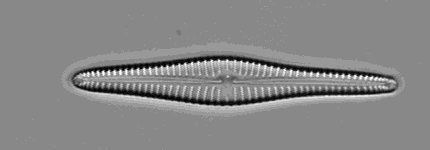Gomphonema tumens Kociolek and Stoermer 1991
|
Length:45 µm |
Width:6.8 µm |
Striae:12 in 10 µm |
|
|
|
|
|
|
|
|
|
Collection 1867 |
Other images |
More information |

Image of the holotype.
